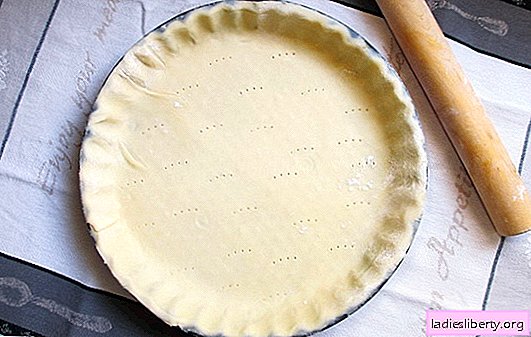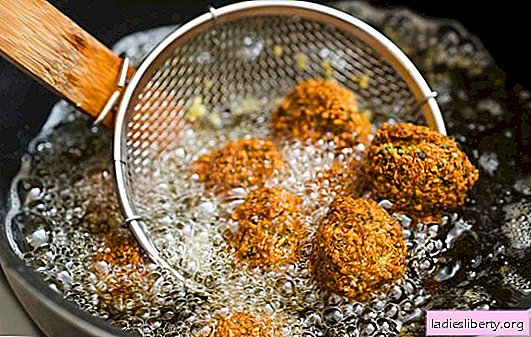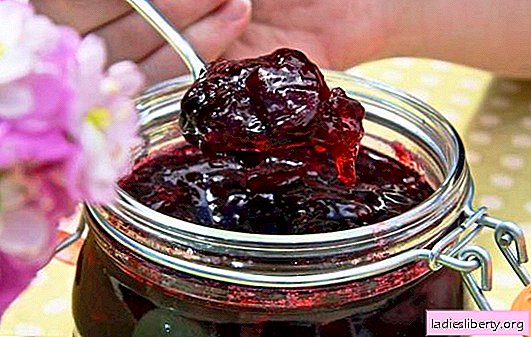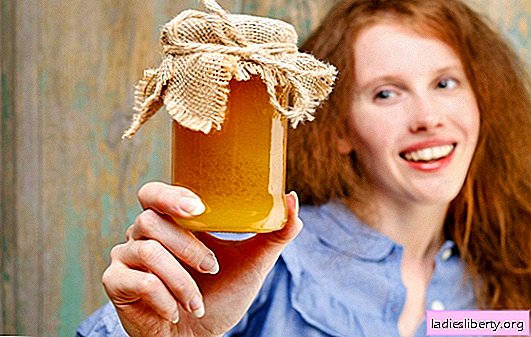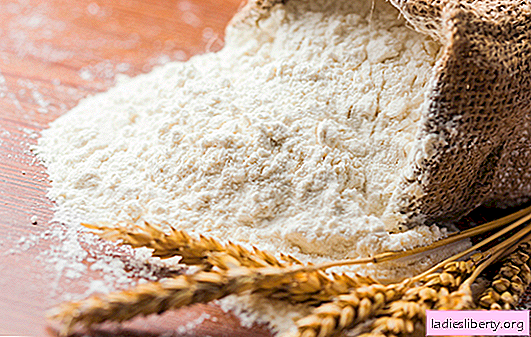
Flour is obtained from grains, fruits and bark of various plants. Of course, we will consider the traditional cereal crops characteristic of our regions. The composition of grain flour contains carbohydrates (starch) - up to 75%, water, fiber, vegetable proteins, fats and saturated fatty acids, vitamins, minerals.
Varieties of healthy flour
Different varieties of healthy flour depend not only on different types of grains, but also on the processing method and grinding characteristics. This takes into account:
· The output, that is, the amount of flour obtained from 100 kg of grain;
· The content of bran particles (bran - seeding, husk particles);
· The amount of gluten (gluten) is a complex protein substance in cereal grains that can turn flour into a viscous dough);
· Ash content of flour (amount of minerals);
· The degree of grinding (grinding grains).
The presence of gluten gives the finished dough such qualities as softness, elasticity, extensibility, the ability to retain carbon dioxide, which increases the volume of the dough. There are separate GOSTs for flour for the preparation of bakery and pasta.
Wheat flour
The most common flour - from wheat, is offered in such grinding options:
· Cereal flour (only 10% of the total amount of grain is obtained) - of the highest and first grade, is produced from some varieties of wheat and differs in that the individual particles are larger. It is most often used for rich yeast products high in fat and sugar.
· Flour of the highest grade (25-30%) - is made from the central part of the endosperm, that is, from grain purified from grain shells, because of which gluten and many minerals are absent in it. It is used for bakery products, in public catering, in the production of semi-finished products. It produces the most delicious products, but it does not quite meet the dietary requirements.
· Flour of the first grade (up to 70%) - a darker color, with ground particles of the shell, retains a high content of gluten and minerals. Bakery products from this flour stale slowly.
· Flour of the second grade (up to 85%) is a more useful grade of flour, which is ground together with grain shells and contains up to 8% bran and an increased amount of vitamins and minerals. This cheaper variety of flour is not suitable for pastries, cakes and pastries, but it makes wonderful pancakes and the most healthy bread.
· Coarse flour (about 93-96%) - contains a lot of bran (twice as much as second grade flour). It does not have sufficiently high baking properties, but is considered useful in dietary nutrition. Such flour is often mixed with varieties of finer grinding so that the bread does not crumble and does not turn out to be very loose.
Rye flour
For baking bread, rye flour is often used, with which tasty mouth-watering grades of "black" bread are obtained. Often mixed with whole grain flour, in the manufacture of which the grains are not cleaned from the germ and shells. Such flour contains dietary fiber, vegetable proteins, fatty unsaturated acids, amino acids, vitamins B1, B2, E, PP, potassium, calcium, magnesium, selenium, copper, fluorine, chromium, zinc.
· Peklevannaya - flour of very fine grinding, the yield of which is 60%, is used for baking gingerbread and confectionery.
· Seeded - fine flour, during the production of which the shell is removed from the grains, so the amount of nutrients is also small.
· Wallpaper (whole grain) - the best grade of rye flour with a high content of bran and useful components. It is made from whole grains, and the yield is 95-96%.
· Peeling - flour with the properties of seeded and wallpaper, has a heterogeneous mass with a high content of grain shells.
Barley flour
Wallpaper and seeded barley flour is produced. It contains beta-glucan, which lowers cholesterol, strengthens the walls of blood vessels. Mix with wheat or rye flour for baking bakery products, add during the preparation of the first and second courses.
Barley flour brewed with boiling water (2 tbsp. Per 1 glass of water) is useful instead of a wholesome wholesome breakfast, has a beneficial effect on the stomach and improves the condition of the intestines. Such barley kissel can be mixed with kefir or fermented baked milk, used as a thickener for gravy and sauce.
Oat flour
Oatmeal makes baking more airy and friable, added to casseroles, rolls. When mixed with other flour for baking, oatmeal should be no more than one third of the total amount due to the low gluten content. Oatmeal contains mucous substances that have enveloping properties and are very useful for the gastrointestinal tract. This flour improves digestion and helps cleanse the body, removes excess water and reduces puffiness. Strengthens the immune system and stimulates mental activity.
Rice flour
It contains a lot of biotin (B7) - it is a water-soluble vitamin that is involved in metabolic processes, improves memory and brain activity. Amylopectin - one of the polysaccharides that make up starch, is used for nutrition with increased physical exertion.
It is distinguished by the fact that it lacks gluten and contains many vitamins and minerals. Cakes, cookies are baked with rice flour, used as a thickener for soups and sauces. When added to another flour, take 1/4 of the rice flour.
Buckwheat flour
There is a lot of lysine in buckwheat flour - this is an essential amino acid that participates in the construction of cells, strengthens the circulatory system. Leucine is an aliphatic amino acid that helps break down fats and remove toxins from the body.
A recognized dietary product that is used to produce low-calorie wholesome baked goods. Used in the preparation of minced meat and other toppings. Helps increase hemoglobin levels in the blood, increase stamina. It is recommended for diet with atherosclerosis, hypertension, diseases of the liver and biliary tract.
Corn flour
Contains many amino acids, vegetable proteins, vitamins and minerals. It is a low-cost, but very useful gluten-free flour, baking with it is not particularly lush, but very tasty, does not stale for a long time and is suitable for dietetic nutrition. It leaves a feeling of fullness for a long time, improves intestinal motility, has a beneficial effect on the excretory system. Improves the condition of bone and cartilage, freshens the skin.
Pea flour
It is considered a very nutritious product in which there is a lot of fiber, vitamins and minerals. It contains the necessary amino acids: lysine, arginine, tryptophan, cystine, which are involved in cell renewal and accelerate metabolic processes.
The quality and quantity of protein pea flour is compared with some types of meat. It saturates for a long time, improves digestive processes. Recommended for osteoporosis and diseases of the musculoskeletal system.
Flax flour
From ground flaxseed, a powder is obtained with a high concentration of flaxseed oil, so freshly ground homemade flour quickly deteriorates. Flax flour is sold in retail chains, in which there is no oil, so it is stored for a long time.
It has valuable food properties and is used to nourish patients with gastritis and other gastrointestinal diseases. Known for its enveloping properties, it normalizes the level of acidity in the stomach. You can add up to 10% of flax flour in any flour and in any products. To cleanse the intestines and lose weight, it is recommended to mix with kefir and use it in the morning on an empty stomach or during the day if possible.
Ways to use healthy flour
In its pure form, wheat or rye flour is used most of all, the remaining types are added in various proportions. Almost all types of flour can be used for baking bakery and confectionery products, cooking main dishes, dressings and sauces. With dietary nutrition, you can cook smoothies with dairy and sour-milk products, in which buckwheat (flax, oat) flour, granola, berries, fruits or dried fruits are added.


